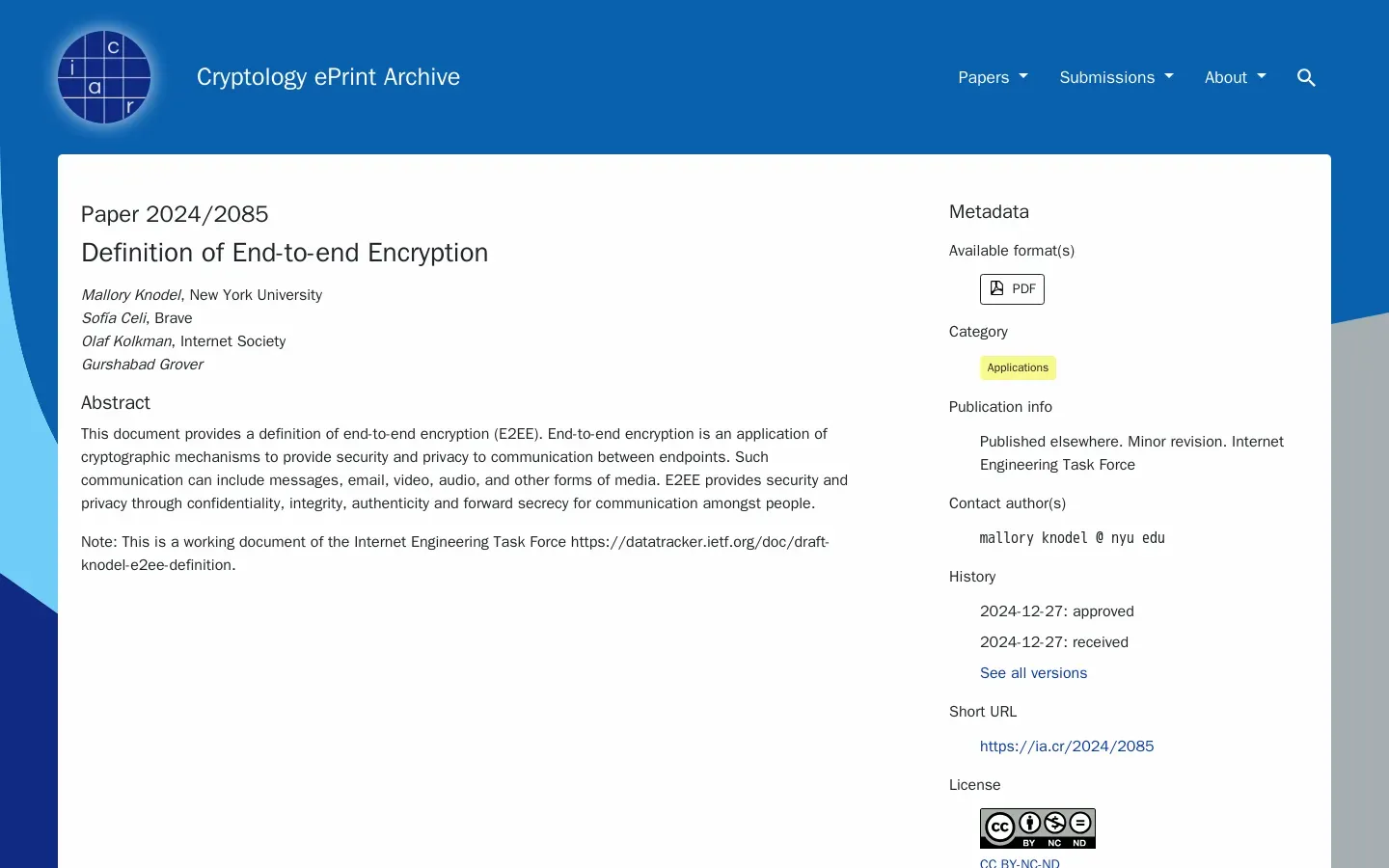
Challenges and Implications of End-to-End Encryption
/ 4 min read
Quick take - A recent research paper examines the complexities and challenges of implementing end-to-end encryption (E2EE) in digital communications, focusing on issues such as interoperability, public key verification, metadata sensitivity, and usability, while highlighting the importance of compliance and user trust in enhancing security and privacy.
Fast Facts
- Key Challenges: The implementation of end-to-end encryption (E2EE) faces challenges such as interoperability, public key verification, metadata sensitivity, and usability, which hinder its effectiveness.
- Usability Focus: Many E2EE applications are complex, making them less accessible to non-technical users; improvements in usability are essential for broader adoption.
- Compliance and Trust: Developers must ensure E2EE systems comply with regulations and build user trust through transparency and reliability.
- Core Tools: Essential tools for E2EE include the Double-Ratchet Algorithm, Authenticated Key Exchange, and techniques for metadata obfuscation to enhance security.
- Future Directions: Ongoing innovation and user-centric design are crucial for E2EE to adapt to emerging technologies and meet user privacy needs in a digital landscape.
Understanding End-to-End Encryption (E2EE) Implementation Challenges and Implications
In today’s digital age, end-to-end encryption (E2EE) stands as a cornerstone of cybersecurity, offering enhanced privacy and security for digital communications. A recent research paper titled “Definition of End-to-End Encryption” by Sofía Celi, Olaf Kolkman, and Gurshabad Grover provides a comprehensive analysis of the complexities involved in implementing E2EE. The study highlights both the benefits and the challenges that must be navigated to fully harness its potential.
Key Objectives and Research Framework
The authors of the paper embark on a mission to dissect the challenges associated with E2EE implementation. Their research focuses on critical areas such as interoperability, public key verification, metadata sensitivity, and usability. By conducting an extensive literature review and developing a conceptual framework, they lay the groundwork for understanding the core features and potential enhancements of E2EE systems.
Implementation Challenges
Interoperability
One of the primary challenges identified is interoperability. Ensuring that different E2EE systems can work together seamlessly remains a significant hurdle. The absence of standardization often leads to fragmentation, which can diminish user experience and hinder widespread adoption.
Public Key Verification
Another critical issue is public key verification. Establishing trust in the authenticity of public keys is essential to prevent man-in-the-middle attacks. The paper discusses methodologies to improve public key infrastructure, aiming to bolster security and build user confidence in encrypted communications.
Metadata Sensitivity
While E2EE effectively encrypts communication content, metadata remains vulnerable. Metadata can reveal sensitive information about users, such as communication patterns and contacts. The research advocates for advanced metadata privacy solutions to address this vulnerability and protect user information comprehensively.
Usability
Usability poses a significant barrier to the adoption of E2EE technologies. Many existing applications are complex, deterring non-technical users from embracing secure communication practices. The authors propose targeted usability improvements to make these technologies more accessible and encourage broader adoption.
Compliance and Trust Factors
Beyond technical challenges, compliance with regulations and trust are crucial factors in E2EE adoption. As E2EE becomes increasingly vital for safeguarding user information, developers must ensure their systems comply with existing laws while earning user trust through transparency and reliability.
Core Features and Tools for E2EE
The research identifies several essential tools and techniques for effective E2EE implementation:
- Double-Ratchet Algorithm: This cryptographic protocol enhances security by ensuring each message is encrypted with a unique key.
- Authenticated Key Exchange (AKE): A method allowing two parties to establish a shared secret over an insecure channel, bolstering communication security.
- Asymmetric and Symmetric Encryption: Utilizing both forms of encryption enhances the overall security framework of E2EE applications.
- Metadata Obfuscation: Techniques aimed at obscuring metadata reduce risks associated with revealing user information.
Emerging Technologies and Future Directions
The paper concludes by exploring the implications of E2EE within emerging technologies. It emphasizes the need for ongoing innovation and user-centric design as digital communication continues to evolve. There is a pressing demand for solutions that not only protect user privacy but also enhance the overall user experience.
As we move forward in this digital era, addressing these challenges will be crucial for ensuring that E2EE technologies meet the needs of users worldwide. Ongoing research and development will play a vital role in overcoming these obstacles, paving the way for more secure and private digital communications.



